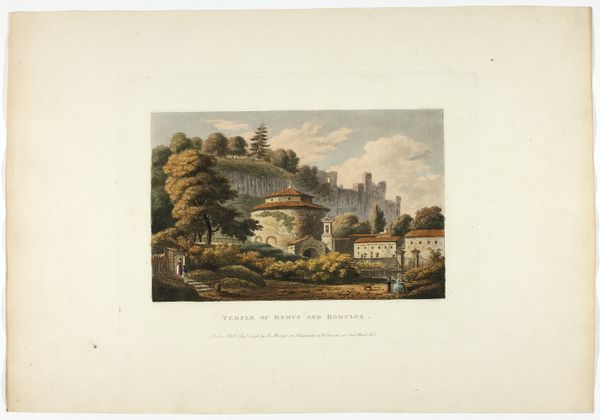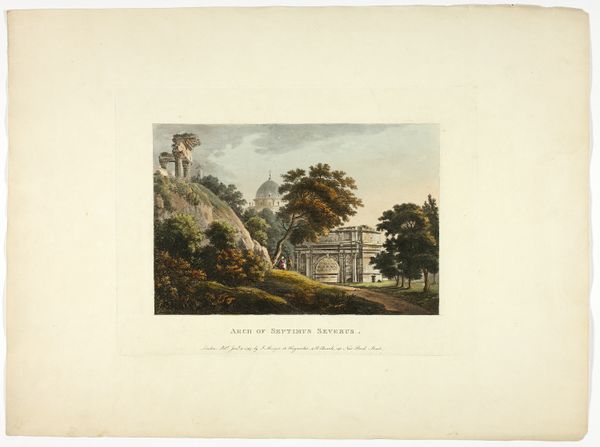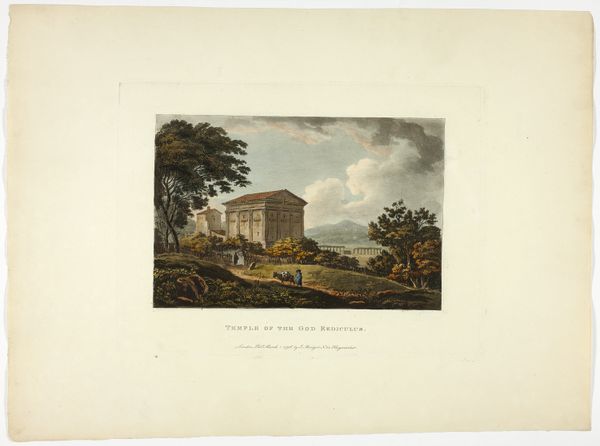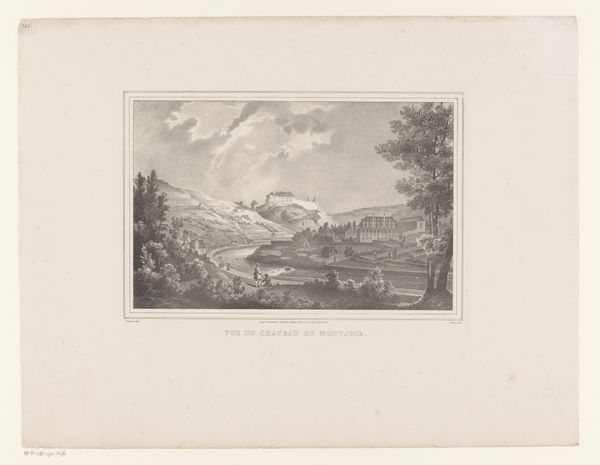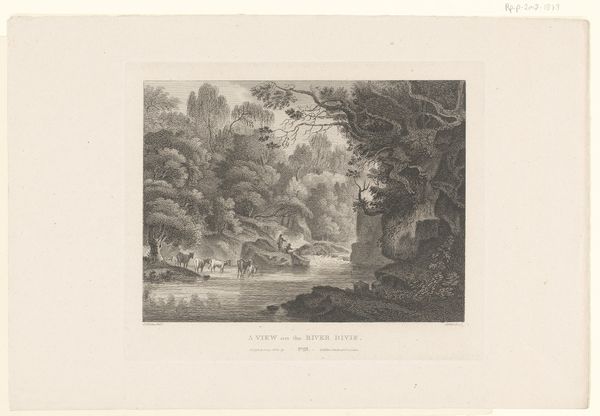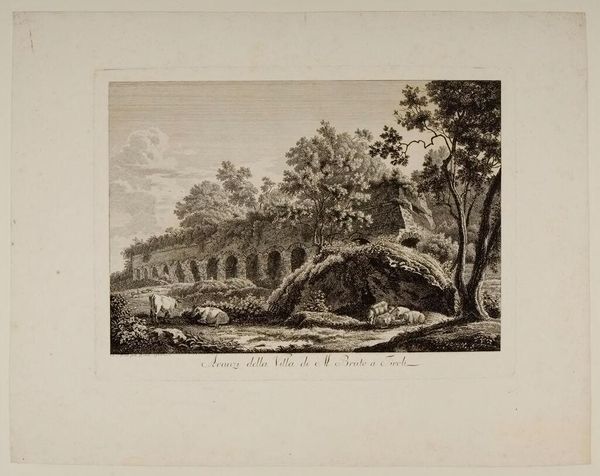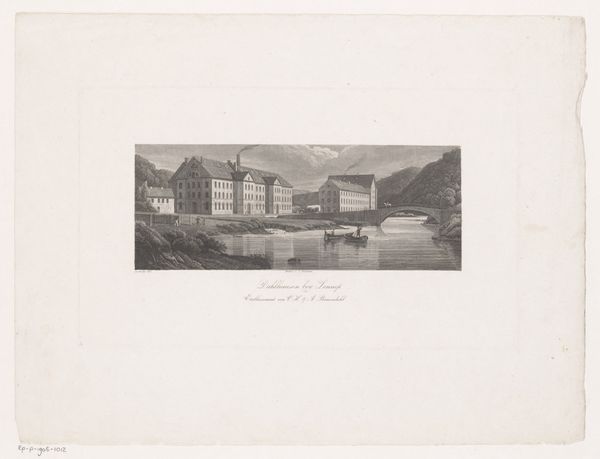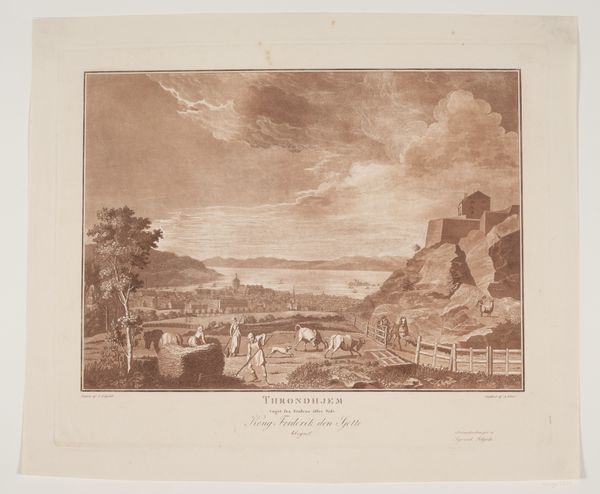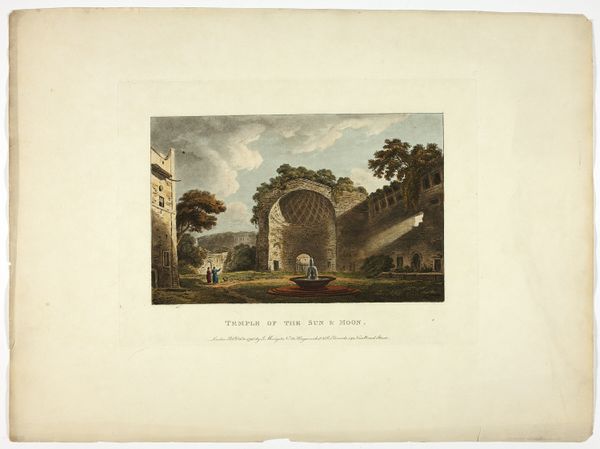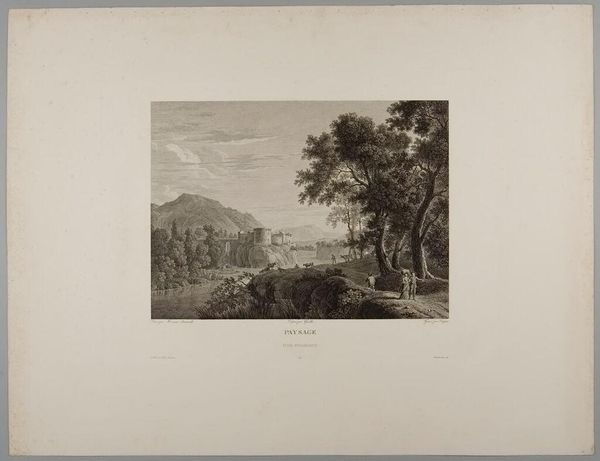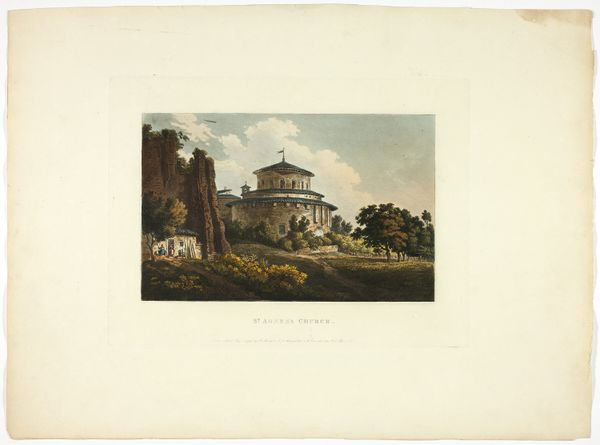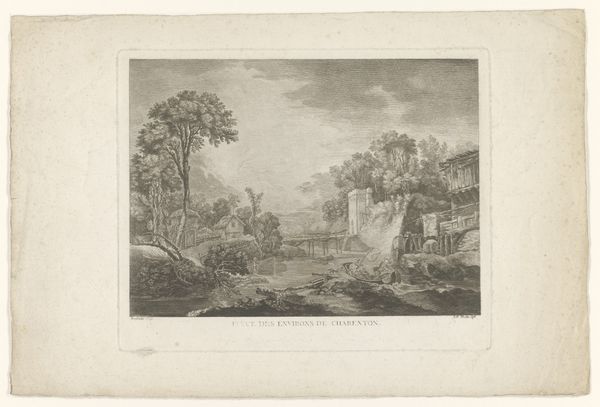
Church of St. Andrew, plate eighteen from the Ruins of Rome c. 1796
0:00
0:00
drawing, print, paper, watercolor
#
drawing
# print
#
landscape
#
perspective
#
paper
#
watercolor
#
romanticism
#
cityscape
#
history-painting
Dimensions: 330 × 448 mm (sheet)
Copyright: Public Domain
Curator: This is "Church of St. Andrew, plate eighteen from the Ruins of Rome," a watercolor print dating back to about 1796, currently residing here at The Art Institute of Chicago. What's your first impression? Editor: The scale, surprisingly intimate for a church in Rome. And a feeling of peaceful decay. It's like a beautiful dream fading at the edges. Curator: Fading, yes. It’s from a series called "Ruins of Rome," so there's a built-in awareness of the ephemeral nature of even the most imposing structures. It’s not just about celebrating architecture; it's about mortality, wouldn't you say? And its materials decaying. Editor: Absolutely. The watercolor and print medium speak to that too. Easily reproduced, somewhat delicate. And I see the process... a kind of industrial reproduction of romantic landscapes for mass consumption. Making a statement on the value of history? Of labour itself? Curator: It certainly suggests a shift in how people were experiencing these places. Before photography, prints like this served as postcards from these historical landmarks. Editor: Right. It brings the "Grand Tour" to your parlor, if you can afford it. How much agency would the original artist actually have, do you imagine, in something that seems ultimately like factory work for art? What were they actually paid, I wonder... Curator: I think what’s brilliant here is the tension. The artist, M. Dubourg, capturing the enduring form but making it available widely, flattening its aura... it's not just craft but rather artistic industrialism. He found ways to make unique observations, while feeding this image machine, so to speak. It really encapsulates the feeling of Romanticism, its love of both sublime nature and manufactured experience. It allows you to actually touch Rome. Editor: Well, now you mention that feeling, yes, I’m thinking of that quiet water flowing in the foreground… I love it. Curator: Exactly. I always find myself drifting into it, despite myself. And the eye soars to that small little villa atop the little Roman mountain... So full of wistful romantic imagining. What final feeling do you have standing here before the artwork? Editor: I think the artist's challenge—replicating romantic ideals—is still there today. What labor gets obscured, what history do we buy in mass-produced art?
Comments
No comments
Be the first to comment and join the conversation on the ultimate creative platform.
